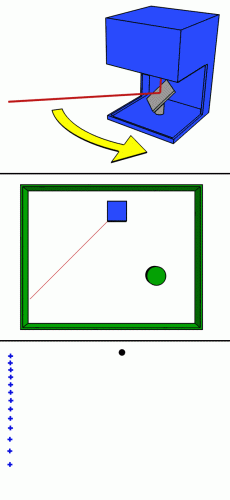Evaluating LIDAR (Laser Scanner) Guide
by David Kohanbash on March 13, 2014

This is part of a series of posts talking about some of the common LIDAR’s used in robotics. At the end of these sensor profile articles there will be a final post that compares the sensors based on data collected by each of the sensors.
Posts:
Evaluating LIDAR Guide
LIDAR Fundamentals
SICK TiM551 – LIDAR Overview
SICK LMS111 – LIDAR Overview
SICK LMS511 – LIDAR Overview
Hokuyo UTM-30LX – LIDAR Overview
LIDAR Review Comparisons
I hope this series (and particularly the final comparison post) proves useful.
Enjoy!
Hi all
I am doing this post a bit different then I usually do. I am publishing this post before it is complete since I want feedback from you. This post is all about how to evaluate LIDAR sensors. I recently got a few LIDAR’s that I will be testing and reviewing on this site, and I want to make sure the important tests for robots are covered.
I will mostly be doing static tests and not scanning the LIDAR since the quality of the assembled scans is hugely dependent on the implementation and factors such as scanning speed, vehicle speed, laser position feedback, and calibration.
I am also going to trust the manufacturers when it comes to certain things such as range, field of view (FOV), resolution, error, shock, etc… The things I want to test are things that are specific to robotics and are not found in the typical datasheet.
Here is my current list of tests:
1. Determine spot size and shape at a given distance (maybe 1 meters)
2. Reported range and intensity for common objects that a robot can encounter (with different reflectivities) at 5m
– Maybe glass, mirror, wood paneling, reflective tape, white paper, 2×4 wood, aluminum sheet, jeans, synthetic black shirt, and a brick.
3. Point LIDAR at puddle
4. Point LIDAR at the sun
5. Evaluate point cloud in the rain
6. Evaluate point cloud in presence of smoke bomb (sort of simulates fine dust/smoke)
7. Range error based on 3D calibration target (based on below)
– http://www.frc.ri.cmu.edu/~uyw/pubs/wong_iros_2011_sensors_camera_ready.pdf
8. Item drop test. I am not sure if this is a useful or a fair test, but maybe drop an item through the beam and see if it gets detected.
9. Static range error test. Leave LIDAR static for 1 minute and see reported ranges.
Interesting Links:
Paper analyzing accuracy and characteristics of sensor (mostly LIDAR)
Cool teardown of SICK LIDAR


Comments
[…] Evaluating LIDAR Guide SICK TiM551 – LIDAR Overview SICK LMS111 – LIDAR Overview (coming soon) SICK LMS511 […]
[…] Evaluating LIDAR Guide LIDAR Fundamentals (coming soon) SICK TiM551 – LIDAR Overview SICK LMS111 – LIDAR […]
[…] Evaluating LIDAR Guide LIDAR Fundamentals SICK TiM551 – LIDAR Overview SICK LMS111 – LIDAR Overview SICK […]
[…] Evaluating LIDAR Guide LIDAR Fundamentals SICK TiM551 – LIDAR Overview SICK LMS111 – LIDAR Overview SICK […]
[…] Evaluating LIDAR Guide LIDAR Fundamentals SICK TiM551 – LIDAR Overview SICK LMS111 – LIDAR Overview SICK […]
[…] Evaluating LIDAR Guide LIDAR Fundamentals SICK TiM551 – LIDAR Overview SICK LMS111 – LIDAR Overview SICK […]